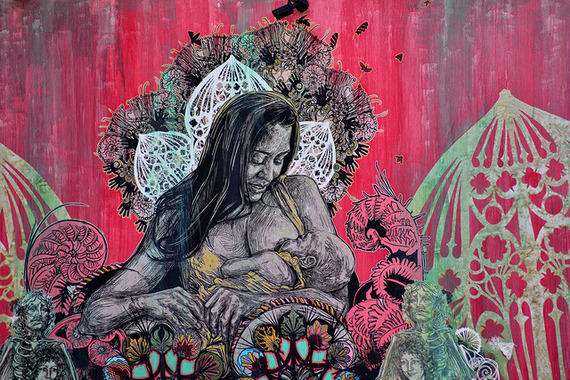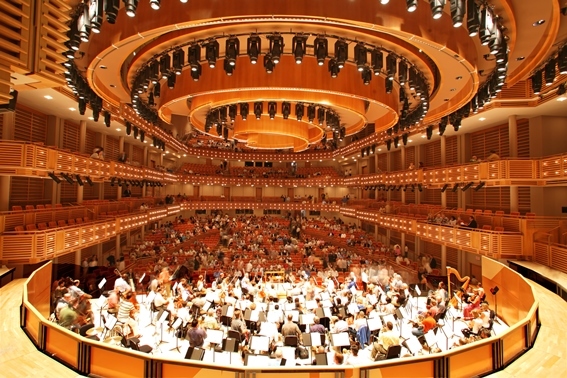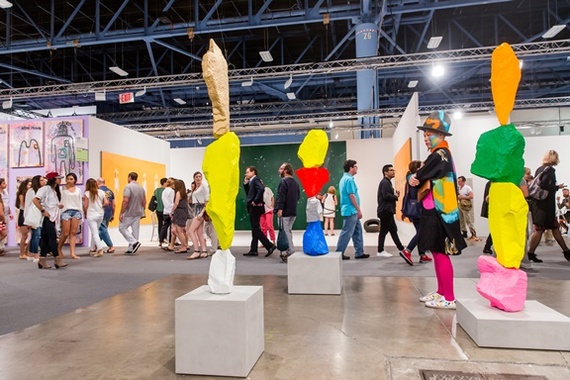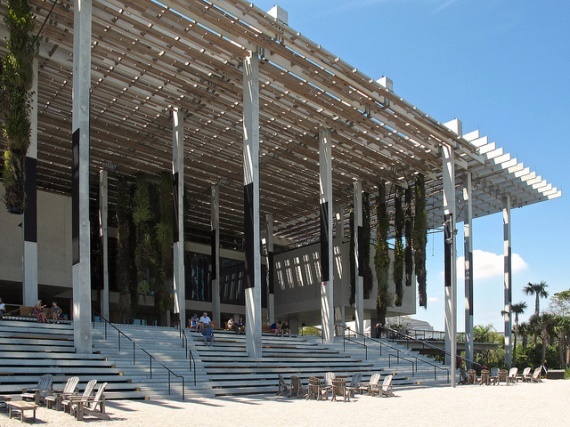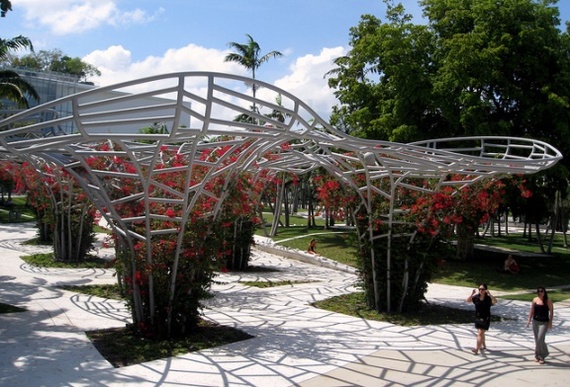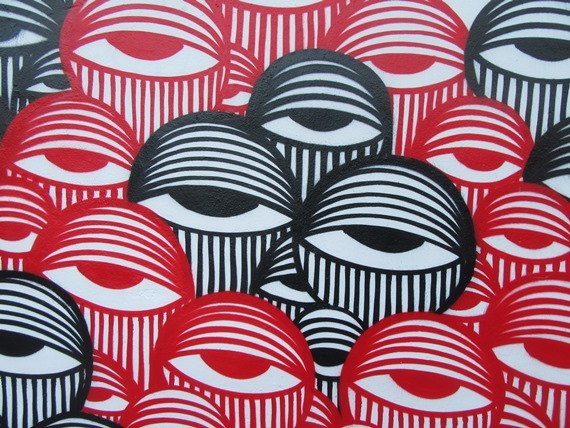
Every few years, the Miami area seems to reinvent itself. Sometimes the comeback stems from loss, as happened in the aftermath of Hurricane Andrew in 1992. And sometimes it is driven by visionary entrepreneurs, which is what’s happening now. Forget the one-dimensional image of the ’90s and early aughts, when the place was synonymous with sun worshiping and unbridled partying. You can still find that sort of revelry, but there is also a thriving cultural scene sustained by a robust community of visual artists, musicians, designers and chefs who are transforming Miami into a multifaceted destination with global appeal. This shift began to take shape with the arrival in 2002 of Art Basel, the Swiss-born art fair that draws the world’s haut monde to the Miami area every December (this year’s event is being held from Dec. 1 to 4). A decade later, in neighborhoods like South Beach, midtown and downtown, it’s almost impossible not to stumble upon art galleries, cultural institutions, architectural showpieces, stylish hotels and restaurants. Be mindful of the Zika-related travel advisory, available on the Greater Miami Convention & Visitors Bureau website, still in place for two sections.
- Friday
1. BACKWATER APERITIF, 3 P.M.
Downtown’s River District, a formerly desolate area of boatyards, loading docks and seafood grills, is one of several neighborhoods in the midst of redevelopment. These days, the banks of the Miami River are being populated by luxury condo towers, shopping arcades and riverside promenades. Get a sneak peek of this renaissance at the new River Yacht Club, a 40,000-square-foot dining and drinking destination featuring chic nautical interiors and dishes prepared by celebrity guest chefs. Pick a spot along the water, and watch visitors arrive by yacht. Not relaxed yet? Order the house caipirinha (cachaça, blueberries, lime and a splash of sparkling wine, $18).2. EYE CANDY, 5 P.M.
The Miami Design District is still partly under construction but already features an eye-catching collection of flagship stores for brands like Hermès, Dior, Loewe and Tom Ford. The Dior boutique, for example, was conceived by Barbarito Bancel Architectes, a French studio that draped the three-story building in white panels emulating the pleats of a skirt. Nearby are whimsical public sculptures and exhibition spaces such as the Institute of Contemporary Art (ICA Miami), dedicated to experimental works.
At Cardón y El Tirano, you can enjoy crispy tostones, burnt hard llanero cheese, and salt-cured picanha steak.
Moris Moreno for The New York Times 3. ECLECTIC SOUNDS, 8 P.M.
Go to a show at the Adrienne Arsht Center for the Performing Arts, a modern, multitheater venue with performances by the Miami City Ballet and the Miami Symphony Orchestra. Built a decade ago by César Pelli, it still stands as South Florida’s leading arts center. For a more informal musical experience, head to Little Havana’s Ball & Chain to hear jazz vocalists, salsa bands and indie acts like Brazilian Girls. The bar, a contemporary take on 1940s Cuban lounges, is packed with a mix of millennials and old-timers ordering guayaba daiquiris ($12).3. PAN-LATIN PALATE, 10 P.M.
Since the 1950s, when Cubans began to arrive in large numbers, there has been a steady influx of immigrants from across the Hispanic world, particularly the Caribbean and South America. Their influence extends to the restaurant scene, with spots like Sugarcane incorporating flavors from Argentina, Peru and Mexico into a menu of international greatest hits. Locals flock to the leafy outdoor patio of this Midtown mainstay (about $40 for dinner, without drinks). At the new Cardón y El Tirano, the Venezuelan chef and owner Francisco Anton offers Latin fusion dishes like tostones with charred queso and seared picanha, a Brazilian beef cut. Housed in a strip mall in Little Havana, this homey spot can easily go unnoticed. (About $30 for dinner, without drinks.) 
Hanging gardens at the Pérez Art Museum Miami, designed by Herzog & de Meuron. Moris Moreno for The New York Times Saturday5. COOL SWEAT, 9:30 A.M.
Walking through the exuberantly landscaped gardens of the Standard Spa, on an islet just off Miami Beach, can transport you to faraway lands, priming you for relaxation. Continue to loosen up at the spa’s Turkish-style hammam ($150 for a day pass that provides access to the hotel’s facilities). This softly lit oasis has a 90-degree main room clad in tiered marble berths and features a cedar sauna, aromatherapy steam room, hydrotherapy stations and soaking tubs. Then fuel up at the chic waterfront restaurant, the Lido Bayside Grill, with poached eggs, multigrain toast and JoJo Tea or La Colombe coffee ($16).6. PEDALS AND PAINTINGS, 11:30 A.M.
Grab a bike at a Citi Bike station (there is one outside the Standard Spa) and pedal west along the Venetian Causeway, which crosses 11 man-made islands linked by bridges. You’ll see mansions surrounded by azure waters, as well as views of the downtown skyline. Park outside the Pérez Art Museum Miami (PAMM). Named for Jorge Pérez, a longtime trustee and benefactor, and designed by the Pritzker Prize-winning architects Herzog & de Meuron, the gallery has sweeping views of Biscayne Bay and is surrounded by hanging gardens by the French botanist Patrick Blanc. Aside from a collection of nearly 2,000 works by American and Latin American artists, PAMM presents works by artists like Doris Salcedo, a Colombian sculptor who famously cracked the floor of the Tate Modern in London for an exhibition. Admission, $16.
The pool at the Standard Hotel, overlooking Miami.
Moris Moreno for The New York Times 7. CARIBBEAN ENCLAVE, 1:30 P.M.
Little Haiti began to take its current shape in the late 1970s with the arrival of thousands of Haitian refugees. Start your tour at the Little Haiti Cultural Complex, which hosts Afro-Caribbean exhibitions and concerts. From Thursday to Saturday, the center hosts a Caribbean Marketplace, with a focus on arts and crafts. The area has attracted a handful of young entrepreneurs who’ve established shops like Sweat Records, a vinyl emporium that draws music geeks. Stop for lunch at the Buena Vista Deli,a corner bistro and bakery known for its renditions of French classics like quiche Lorraine and salade niçoise (about $15 for lunch).8. GRAFFITI SCENE, 4 P.M.
Thanks in part to the efforts of the late Tony Goldman, an arts patron and businessman, a no man’s land scattered with abandoned warehouses became an open-air museum for street art in the Wynwood neighborhood. The center of the action is Wynwood Walls, a park enclosed by murals by some of the world’s best graffiti artists. All around are restaurants, art galleries and boutiques. Browse the classic sports cars and guitars at Walt Grace Vintage. Then grab a beer at a nearby microbrewery; J. Wakefield Brewing offers sour beers made with tropical fruits, like the award-winning Dragon Fruit Passion Fruit Berliner Weisse. (In September, Wynwood was declared Zika-free, following a concerted effort to eradicate mosquitoes.)
A Pastelito daiquiri and Pastelitos de Guayaba at Ball & Chain in Little Havana.
Moris Moreno for The New York Times 9. TOP CHEF, 8 P.M.
Brad Kilgore, named one of this year’s best new chefs by Food & Wine Magazine, is elevating Miami’s culinary standards at Alter. Recently, he served an interpretation of classic cassoulet, made with slow-cooked mahi mahi served alongside a smoked white bean mousse, rye bread and Serrano ham jus. Entrees are about $30.10. DISCO, MAYBE, 11 P.M.
Head to the Raleigh Hotel’s Martini Bar in South Beach, decked in mahogany and burgundy leather. Ask the barman for any variation of a classic martini, or a cocktail like the Triple Crown (Canadian whisky, lemon juice, falernum liqueur and peach bitters, $14). If velvet ropes and bottle service are your thing, go to high-octane Story, a sprawling nightclub that brings in D.J.s like David Guetta, Sasha and Cedric Gervais.
South Pointe Park in Miami Beach. Moris Moreno for The New York Times Sunday11. SANDY MORNING, 10 A.M.
Take a cue from locals and head to SoFi (South of Fifth Street), an uncrowded part of Miami Beach whose unofficial name, Brazilian Beach, points to the near absence of beachwear. Don’t worry, board shorts and one pieces are welcome. Stop at Pura Vida for smoothies and açai bowls.12. FIRE AND GOLD, NOON
Alan Faena, the Argentine real estate developer who rebuilt a swath of Buenos Aires’s waterfront, descended on Miami with even more ambitious plans. He is now overseeing the final stages of the Faena District, which spans six blocks along Collins Avenue and includes residential towers, a cultural center called the Faena Forum, and hotels, including the spectacular Faena Hotel Miami Beach, designed by the film director Baz Luhrmann and his wife, Catherine Martin, a costume and set designer. Behind the Faena Hotel lobby’s gold columns and allegoric murals, Los Fuegos, headed by the chef Francis Mallmann, offers on Sundays a traditional asado, or barbecue, on communal tables on a shady patio. The meal may include such dishes as beef empanadas, sweetbreads with chimichurri, and rib-eye ($75 prix fixe).
